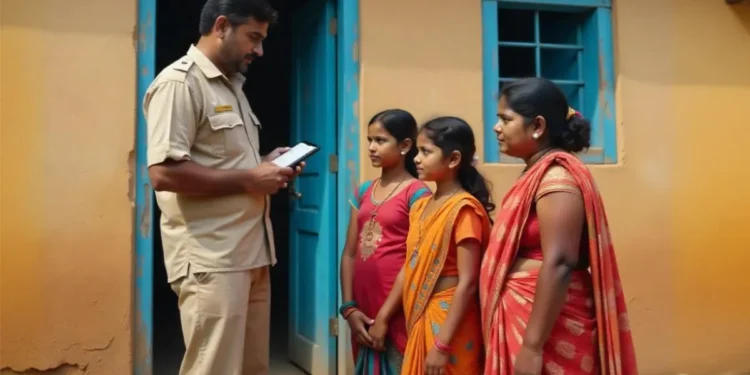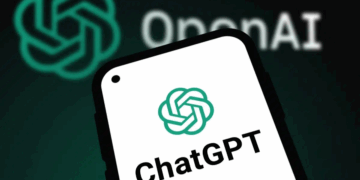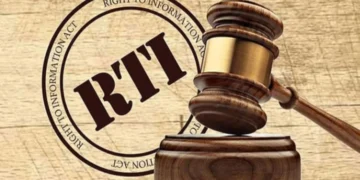On July 8, 2025, the Registrar General of India (RGI) announced that the upcoming 2027 census will use digital tools like mobile apps and web portals. This marks the first time that the census will include self-enumeration and a nationwide caste survey. While this digital shift is seen as a modern step in data collection, it also brings up serious concerns related to privacy, data safety, and fairness.
What’s Changing in the 2027 Census?
The government wants to use technology to make the census more accurate and inclusive. It plans to collect detailed information on caste and socio-economic status to help design better public policies and tackle long-standing inequalities. However, using online systems and collecting such sensitive data brings new risks.
Challenges of Going Digital
Digital tools and self-enumeration (where people fill in their own details) may help collect data more quickly, especially in a country of over 1.4 billion people. The government says this will let people from all areas, even remote ones, take part in the caste census easily.
But there are problems. A large part of India’s rural population still doesn’t have regular access to the internet. The National Family Health Survey (2021–22) found that only 57% of rural homes had internet, compared to 80% in cities. This gap could leave out many people, especially those from lower castes and disadvantaged groups.
Also, caste is a complex topic in India. People may struggle to report their caste correctly, and without trained census workers to guide them, the data may be wrong or misleading. This could hurt the overall accuracy of the census.
The plan also includes verifying identities using Aadhaar, India’s digital ID system. But some people — often from poor or marginalised communities — still don’t have Aadhaar. This could mean their voices won’t be counted, defeating the purpose of the census.
Privacy Risks and Data Protection
The new digital census format means that personal details like caste, religion, gender, and income will be collected and stored online. India’s data protection law — the Digital Personal Data Protection (DPDP) Act, 2023 — exists, but it doesn’t yet have strong enforcement.
Recent incidents show that government systems are not fully secure. For example, in 2023, data from the CoWIN vaccination portal was leaked, putting millions at risk. If something similar happens during the digital census, it could lead to identity theft, discrimination, or targeting of certain communities.
People will be entering their details using their own devices, which may not be secure or updated. This increases the chances of cyberattacks and data leaks. Without strong rules for data security, the risk of misuse is high.
Worries About Surveillance
Connecting census data with Aadhaar also raises the issue of state surveillance. Aadhaar already tracks access to many services, and it’s now linked to voter IDs too. If caste data is also added, the government may be able to build detailed profiles of individuals — their religion, caste, income, and where they live.
Such information could be misused for political reasons, like targeting voters or silencing dissent. Instead of helping the marginalised, the census could become a tool for control.
There are also concerns about transparency. The way data will be stored and shared with other government departments is not clear. In the past, linking Aadhaar with voter lists or the National Population Register (NPR) has raised fears of exclusion and bias.
There is no independent authority in place to make sure the data is used fairly or to handle complaints, which weakens public trust in the process.
Cybersecurity Threats
India is one of the top countries targeted by cyberattacks. The Data Security Council of India says the country faces hundreds of hacking attempts every minute. In just the first three months of 2024, over 500 million cyberattacks were reported.
Critical systems like the power grid have already been attacked. A digital caste census, with its huge amount of sensitive data, would be a prime target. Hackers could change the data, leading to wrong government decisions or even affecting elections.
What Needs to Be Done?
If the government is serious about going digital, it must put strong protections in place. This includes:
- Ensuring internet access for everyone, especially in rural areas.
- Following the DPDP law strictly and running regular security checks.
- Using strong data encryption and safe online systems.
- Creating an independent body to watch over how the data is used.
- Educating the public about their rights and how to use the digital tools safely.
The goal of using the caste census to fight inequality is important. But for it to succeed, the government must focus on fairness, safety, and transparency. Without these, the very people the census is supposed to help could be put at greater risk.
Also read: https://news.concur.live/email-data-breach-affects-three-hipaa-groups/









